Share this
C2 vs. C4ISR vs. C5ISR vs. C6ISR: What’s the Difference?
by Brett Daniel on Dec 16, 2020 1:19:53 PM
In this blog post, we’ll start by explaining C2, as it is the very foundation of C4ISR, C5ISR, and C6ISR.
Then, we’ll tie that essential discussion into a summary of the differences between C4ISR, C5ISR, and C6ISR, providing examples and answering these frequently asked questions in the process: What do they really mean, why are they important, and why do they keep changing?
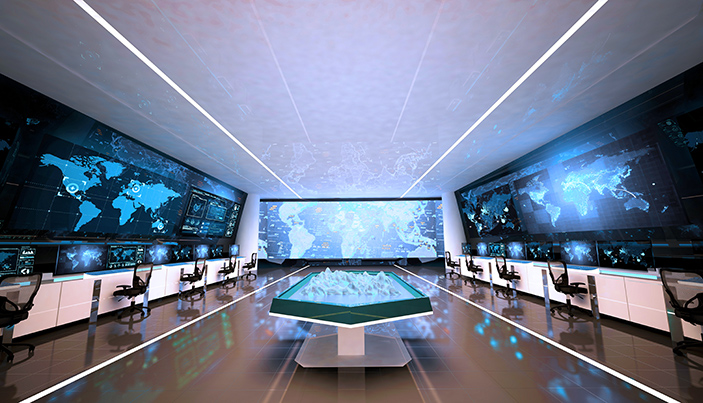
Graphic: A command and control center concept
Introduction to command and control (C2)
Every discipline has a plethora of unique words, phrases, and acronyms, sometimes pejoratively known as “jargon,” that make up its writings, teachings, and deliberations.
Command and control (C2), as well as the activities of which it consists, is no different.
C2 is home to a host of similar acronyms that, when frequently used by the U.S. military, intelligence agencies, national security analysts, and others in the defense community, may cause one to wonder:
What are the differences between these concepts, anyway?
One such example is that of C4ISR, C5ISR, and C6ISR. You’ve probably seen these acronyms scattered across various military blogs, military websites, and the websites of defense contractors selling, for example, “C4ISR systems.” You’ve probably also seen them used in various DoD publications or heard DoD officials use them in speeches.
Understanding the differences between C4ISR, C5ISR, and C6ISR is essential to understanding what industry experts mean when they use them in publications, speeches, or collateral.
But to fully understand the differences, it’s important to first understand command and control (C2), not only because C2 is the core framework from which C4ISR, C5ISR, and C6ISR are derived, but because without it, C4ISR, C5ISR, and C6ISR would not exist.
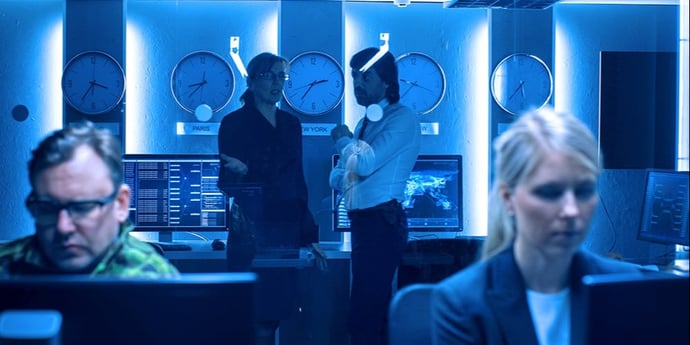
Photo: Command and control involves the execution of a variety of different activities to ensure mission success.
What is command and control (C2)?
Command and control, or C2, is defined by the DoD as “the exercise of authority and direction by a properly designated commander over assigned and attached forces in the accomplishment of the mission.”
“Command” represents the “vested authority that a commander in the military service lawfully exercises over subordinates by virtue of rank or assignment.”
“Control,” on the other hand, comprises “those functions of command involving the composition of subordinate forces, the assignment of tasks, the designation of objectives, and the authoritative direction necessary to accomplish the mission.”
In a nutshell, C2 addresses how military commanders lead the Armed Forces to success through the planning and execution of mission-related activities.
Specifically, command and control is about focusing the efforts of a number of entities (individuals and organizations) and resources, including information, toward the achievement of some task, objective, or goal.
- Understanding Command and Control
C2 can be divided into two separate concepts to differentiate between the actual systems used to facilitate C2 and the commanders’ literal decision-making processes. These concepts are simply known as the “command and control system” and the “command and control process.”
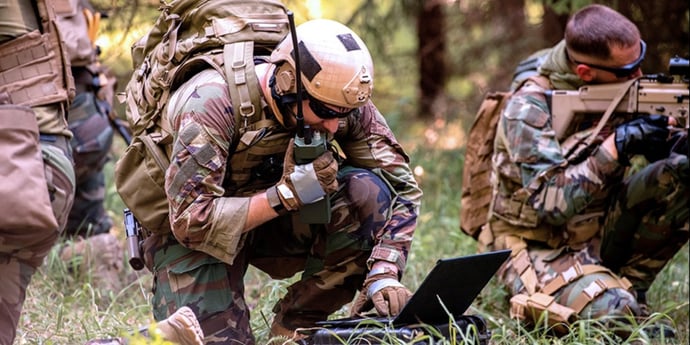
Photo: The C2 process is all about providing commanders with the information they make key decisions that support mission outcomes.
What is the C2 process?
The C2 process is not mysterious, obscure, or new to anyone who has a general knowledge of the history of war or conflict between nations.
The actions of commanding and controlling military forces date back to the ancient beginnings of warfare itself; the U.S. military just has a name for the concept now, C2, that encompasses the planning and execution of these actions.
The C2 process is defined as “making, disseminating, and implementing informed command decisions” to obtain optimum effectiveness of the nation’s military forces in peace time, crisis, conflict, or war.
The C2 process comprises three major areas:
- Information management, or the collection of timely and accurate information for use by the commander in the decision-making process
- Decision management, or the act of the commander making C2 judgments based on the collection of timely and accurate information
- Execution management, or the various ways in which a commander and the Armed Forces carry out actions based on decisions
And these three major areas, in turn, comprise four fundamental functions, which are rather straightforward:
- Observe, part of the information management area
- Orient, also part of the information management area. It involves assessing the veracity and credibility of information to perform an assessment of a situation.
- Decide, part of the decision management area
- Act, part of the execution management area
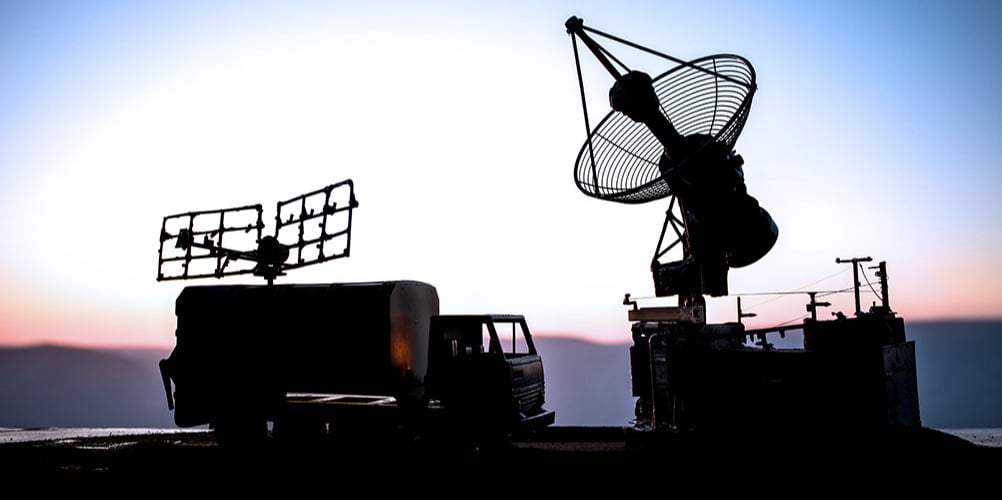
Photo: The C2 system includes the communications, facilities, equipment, personnel, and procedures that help ensure mission success.
What is the C2 system?
The C2 system is a combination of technologies and practices that informs and supports the C2 processes executed by commanders and members of the Armed Forces.
The C2 system has six basic characteristics:
- Reliability – can the system perform required functions under stated conditions for a specified period?
- Survivability – is the system robust and can it withstand enemy attacks across the entire spectrum of conflict?
- Flexibility – can the system adapt to fast-changing environments and advancements in technology?
- Responsiveness – can the system respond quickly and accurately to support the commander’s leadership?
- Interoperability – can the C2 systems and subsystems of the entire Armed Forces coexist harmoniously to support joint or combined operations?
- User-orientation – does the commander and his or her subordinates have access to usable information in a clear, unambiguous format?
The main purpose of the C2 system is simple: meet the needs of the commander so that he or she can lead effectively. Contrary to what some might think, the system is focused not only on technology, but on a variety of different variables.
The C2 system has four main variables:
- Communications, such as satellite and telecommunications, and which, when combined with C2, forms command, control, and communications (C3)
- Facilities and equipment, such as command and control centers, or even the rugged servers and workstations that support the flow of information throughout the system. When computers such as these are introduced into the system, C3 becomes C4, or “command, control, communications, and computers.”
- Personnel, such as those servicemembers who aid in the commander’s decision-making process, execute on behalf of the commander, and ensure the system’s components are functioning properly
- Procedures, such as standard operating procedures (SOPs) that govern information, decision, and execution management, or the processes of observing, orientating, deciding, and acting
The C2 process and system, in tandem and assuming all components function as expected, combine to form effective C2, defined as the “net result of the successful interaction of a complex architecture that is comprised of people, procedures, and equipment.”
Over the years, as technology has advanced, new disciplines, activities, and practices have been added to the C2 framework, which has given us the terms we frequently use today: C4ISR, C5ISR, and C6ISR.
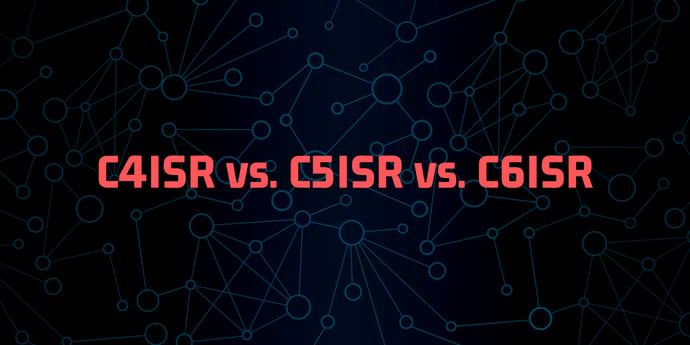
Graphic: C4ISR, C5ISR, and C6ISR are just technological and disciplinary extensions of the core C2 framework.
C4ISR vs. C5ISR vs. C6ISR: What’s the difference?
Now that you understand C2, we can discuss the elements that build upon this framework.
C4ISR, an acronym used often by the U.S. Department of Defense, defense industrial base (DIB), American intelligence agencies, and others in the American defense and intelligence communities, stands for “command, control, communications, computers (C4), intelligence, surveillance, and reconnaissance (ISR).”
The acronym’s four “Cs” represent an extension of the command and control (C2) concept, adding the two “Cs,” “communications” and “computers,” or C4, to account for the implementation of facilities, equipment, personnel, and procedures related to both. The addition of “ISR” accounts for any military intelligence collection activities related to the combination of C4.
Now, we’re adding a fifth and sixth “C” to the command and control (C2) framework.
C5ISR stands for “command, control, computers, communications, cyber-defense (C5), intelligence, surveillance, and reconnaissance (ISR).” C6ISR adds “combat systems” to the framework, making for quite a lengthy acronym: “command, control, communications, computers, cyber-defense, combat systems (C6), intelligence, surveillance, and reconnaissance (ISR).”
Essentially, the only real difference between C4ISR, C5ISR, and C6ISR is the addition of facilities, equipment, personnel, and procedures related to computers, cyber-defense, and combat systems, respectively, to the C2 framework.
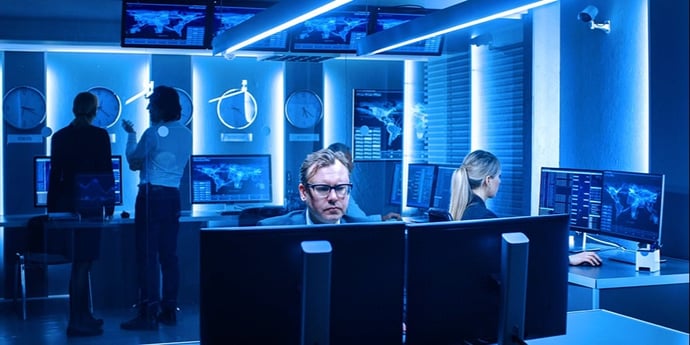
Photo: The best examples of a C4ISR, C5ISR, and C6ISR systems are military command and control facilities.
Examples of C4ISR, C5ISR, and C6ISR systems
There is no typical example of a C4ISR, C5ISR, or C6ISR system because any given military system involves a multitude of different facilities, equipment, personnel, and procedures unique to their application, environment, and mission.
Perhaps the best example of a C4ISR/C5ISR/C6ISR system we can provide is a desert-deployed command and control post:
- C4ISR system example: A command and control post with an internet connection, servers, and workstations that interface with nearby ground vehicles, aircraft, and foot soldiers gathering information about the environment
- C5ISR system example: A command and control post with an internet connection, servers, workstations, and cybersecurity defenses, such as Linux system hardening security software or self-encrypting storage drives, that supports the intelligence, surveillance, and reconnaissance activities of nearby ground vehicles, aircraft, and foot soldiers
- C6ISR system example: A combat information center aboard a warship with an internet connection, servers, workstations, and cybersecurity defenses, all of which support a defense system, such as the Aegis Combat System
Most DoD publications, officials, and defense contractors use the acronym C4ISR, so if you see C5ISR or C6ISR being used, it’s likely that the writer or speaker wishes to highlight elements of either acronym’s specific addition – “cyber-defense” with C5ISR or “combat systems” with C6ISR, for instance – or indicate that the topic they’re discussing includes subject matter about the facilities, equipment, personnel, and procedures related to the synergy of each discipline or activity.
Why do these acronyms keep changing?
As the military incorporates new and advancing technologies into the C2 framework, it’s likely that we’ll continue to see variations of its associated acronyms.
After all, the C2 system “must be flexible to evolutionary changes enabling it to keep pace with advances in state-of-the-art technology.”
It’s important to understand that, no matter how many new technologies, disciplines, or practices are added to the framework, C2 is the core that holds such advancements together. C4ISR, C5ISR, and C6ISR are just extensions of the foundational tenets of command and control.
Indeed, the basic actions of commanding and controlling a nation’s Armed Forces will likely never change. Only the process and system, ergo, how command and control is executed, will continue to evolve.
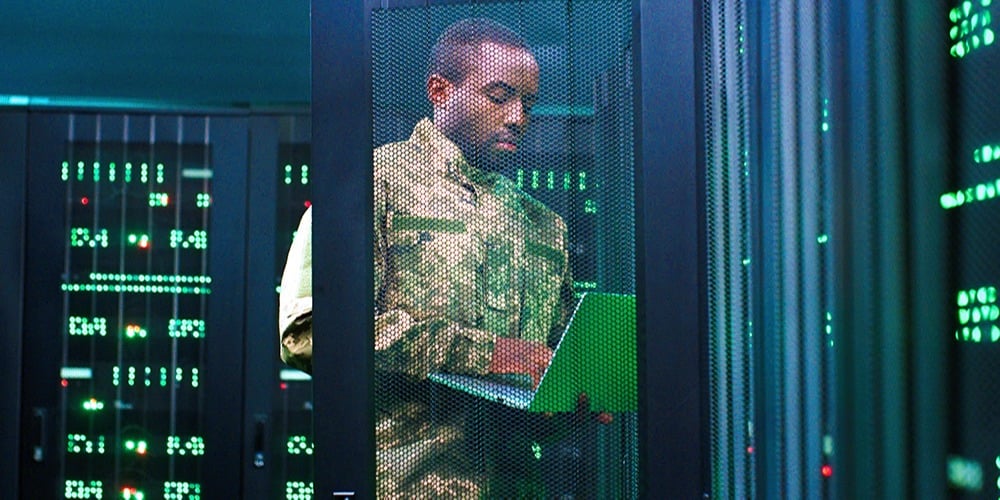
Photo: Achieve piece of mind with reliable, trusted technology to that effectively supports your C4ISR, C5ISR, or C6ISR system and helps you achieve mission success.
Conclusion: Reliability for Mission-Critical C4ISR, C5ISR, & C6ISR Systems
As we saw with the USS Liberty incident, a failure of a C3 element can cause immense tragedy.
Furthermore, the complex scope of today’s advanced C4ISR, C5ISR, and C6ISR systems, which, in support of joint all-domain command and control (JADC2), utilize various cybersecurity controls, artificial intelligence (AI) capabilities, among other technologies, creates the potential for tragedy on an even larger scale.
That’s why it’s crucial to purchase from trusted hardware and software vendors with a well-established reputation for providing and supporting long-lasting, durable, reliable, and secure equipment for mission-critical C4ISR, C5ISR, and C6ISR systems.
Trenton Systems’ long-life, secure rugged servers and workstations are ideal and are currently deployed in numerous mission-critical C4ISR, C5ISR, and C6ISR systems, with great success. One example of many is Trenton’s support of a propeller-type aircraft program.
For more information about securing a trustworthy, made-in-USA rugged computing solution for your C4ISR, C5ISR, or C6ISR program or application, don’t hesitate to inquire further.
We’re on standby.
References
Share this
- High-performance computers (42)
- Military computers (38)
- Rugged computers (32)
- Cybersecurity (25)
- Industrial computers (25)
- Military servers (24)
- MIL-SPEC (20)
- Rugged servers (19)
- Press Release (17)
- Industrial servers (16)
- MIL-STD-810 (16)
- 5G Technology (14)
- Intel (13)
- Rack mount servers (12)
- processing (12)
- Computer hardware (11)
- Edge computing (11)
- Rugged workstations (11)
- Made in USA (10)
- Partnerships (9)
- Rugged computing (9)
- Sales, Marketing, and Business Development (9)
- Trenton Systems (9)
- networking (9)
- Peripheral Component Interconnect Express (PCIe) (7)
- Encryption (6)
- Federal Information Processing Standards (FIPS) (6)
- GPUs (6)
- IPU (6)
- Joint All-Domain Command and Control (JADC2) (6)
- Server motherboards (6)
- artificial intelligence (6)
- Computer stress tests (5)
- Cross domain solutions (5)
- Mission-critical servers (5)
- Rugged mini PCs (5)
- AI (4)
- BIOS (4)
- CPU (4)
- Defense (4)
- Military primes (4)
- Mission-critical systems (4)
- Platform Firmware Resilience (PFR) (4)
- Rugged blade servers (4)
- containerization (4)
- data protection (4)
- virtualization (4)
- Counterfeit electronic parts (3)
- DO-160 (3)
- Edge servers (3)
- Firmware (3)
- HPC (3)
- Just a Bunch of Disks (JBOD) (3)
- Leadership (3)
- Navy (3)
- O-RAN (3)
- RAID (3)
- RAM (3)
- Revision control (3)
- Ruggedization (3)
- SATCOM (3)
- Storage servers (3)
- Supply chain (3)
- Tactical Advanced Computer (TAC) (3)
- Wide-temp computers (3)
- computers made in the USA (3)
- data transfer (3)
- deep learning (3)
- embedded computers (3)
- embedded systems (3)
- firmware security (3)
- machine learning (3)
- Automatic test equipment (ATE) (2)
- C6ISR (2)
- COTS (2)
- COVID-19 (2)
- CPUs (2)
- Compliance (2)
- Compute Express Link (CXL) (2)
- Computer networking (2)
- Controlled Unclassified Information (CUI) (2)
- DDR (2)
- DDR4 (2)
- DPU (2)
- Dual CPU motherboards (2)
- EW (2)
- I/O (2)
- Military standards (2)
- NVIDIA (2)
- NVMe SSDs (2)
- PCIe (2)
- PCIe 4.0 (2)
- PCIe 5.0 (2)
- RAN (2)
- SIGINT (2)
- SWaP-C (2)
- Software Guard Extensions (SGX) (2)
- Submarines (2)
- Supply chain security (2)
- TAA compliance (2)
- airborne (2)
- as9100d (2)
- chassis (2)
- data diode (2)
- end-to-end solution (2)
- hardware security (2)
- hardware virtualization (2)
- integrated combat system (2)
- manufacturing reps (2)
- memory (2)
- mission computers (2)
- private 5G (2)
- protection (2)
- secure by design (2)
- small form factor (2)
- software security (2)
- vRAN (2)
- zero trust (2)
- zero trust architecture (2)
- 3U BAM Server (1)
- 4G (1)
- 4U (1)
- 5G Frequencies (1)
- 5G Frequency Bands (1)
- AI/ML/DL (1)
- Access CDS (1)
- Aegis Combat System (1)
- Armed Forces (1)
- Asymmetric encryption (1)
- C-RAN (1)
- COMINT (1)
- Cloud-based CDS (1)
- Coast Guard (1)
- Compliance testing (1)
- Computer life cycle (1)
- Containers (1)
- D-RAN (1)
- DART (1)
- DDR5 (1)
- DMEA (1)
- Data Center Modular Hardware System (DC-MHS) (1)
- Data Plane Development Kit (DPDK) (1)
- Defense Advanced Research Projects (DARP) (1)
- ELINT (1)
- EMI (1)
- EO/IR (1)
- Electromagnetic Interference (1)
- Electronic Warfare (EW) (1)
- FIPS 140-2 (1)
- FIPS 140-3 (1)
- Field Programmable Gate Array (FPGA) (1)
- Ground Control Stations (GCS) (1)
- Hardware-based CDS (1)
- Hybrid CDS (1)
- IES.5G (1)
- ION Mini PC (1)
- IP Ratings (1)
- IPMI (1)
- Industrial Internet of Things (IIoT) (1)
- Industry news (1)
- Integrated Base Defense (IBD) (1)
- LAN ports (1)
- LTE (1)
- Life cycle management (1)
- Lockheed Martin (1)
- MIL-S-901 (1)
- MIL-STD-167-1 (1)
- MIL-STD-461 (1)
- MIL-STD-464 (1)
- MOSA (1)
- Multi-Access Edge Computing (1)
- NASA (1)
- NIC (1)
- NIC Card (1)
- NVMe (1)
- O-RAN compliant (1)
- Oil and Gas (1)
- Open Compute Project (OCP) (1)
- OpenRAN (1)
- P4 (1)
- PCIe card (1)
- PCIe lane (1)
- PCIe slot (1)
- Precision timestamping (1)
- Product life cycle (1)
- ROM (1)
- Raytheon (1)
- Remotely piloted aircraft (RPA) (1)
- Rugged computing glossary (1)
- SEDs (1)
- SIM Card (1)
- Secure boot (1)
- Sensor Open Systems Architecture (SOSA) (1)
- Small form-factor pluggable (SFP) (1)
- Smart Edge (1)
- Smart NIC (1)
- SmartNIC (1)
- Software-based CDS (1)
- Symmetric encryption (1)
- System hardening (1)
- System hardening best practices (1)
- TME (1)
- Tech Partners (1)
- Total Memory Encryption (TME) (1)
- Transfer CDS (1)
- USB ports (1)
- VMEbus International Trade Association (VITA) (1)
- Vertical Lift Consortium (VLC) (1)
- Virtual machines (1)
- What are embedded systems? (1)
- Wired access backhaul (1)
- Wireless access backhaul (1)
- accredidation (1)
- aerospace (1)
- air gaps (1)
- airborne computers (1)
- asteroid (1)
- authentication (1)
- autonomous (1)
- certification (1)
- cognitive software-defined radios (CDRS) (1)
- command and control (C2) (1)
- communications (1)
- cores (1)
- custom (1)
- customer service (1)
- customer support (1)
- data linking (1)
- data recording (1)
- ethernet (1)
- full disk encryption (1)
- hardware monitoring (1)
- heat sink (1)
- hypervisor (1)
- in-house technical support (1)
- input (1)
- integrated edge solution (1)
- international business (1)
- licensed spectrum (1)
- liquid cooling (1)
- mCOTS (1)
- microelectronics (1)
- missile defense (1)
- mixed criticality (1)
- moving (1)
- multi-factor authentication (1)
- network slicing (1)
- neural networks (1)
- new headquarters (1)
- next generation interceptor (1)
- non-volatile memory (1)
- operating system (1)
- output (1)
- outsourced technical support (1)
- post-boot (1)
- pre-boot (1)
- private networks (1)
- public networks (1)
- radio access network (RAN) (1)
- reconnaissance (1)
- rugged memory (1)
- secure flash (1)
- security (1)
- self-encrypting drives (SEDs) (1)
- sff (1)
- software (1)
- software-defined radios (SDRs) (1)
- speeds and feeds (1)
- standalone (1)
- storage (1)
- systems (1)
- tactical wide area networks (1)
- technical support (1)
- technology (1)
- third-party motherboards (1)
- troposcatter communication (1)
- unlicensed spectrum (1)
- volatile memory (1)
- vpx (1)
- zero trust network (1)
- January 2025 (1)
- November 2024 (1)
- October 2024 (1)
- August 2024 (1)
- July 2024 (1)
- May 2024 (1)
- April 2024 (3)
- February 2024 (1)
- November 2023 (1)
- October 2023 (1)
- July 2023 (1)
- June 2023 (3)
- May 2023 (7)
- April 2023 (5)
- March 2023 (7)
- December 2022 (2)
- November 2022 (6)
- October 2022 (7)
- September 2022 (8)
- August 2022 (3)
- July 2022 (4)
- June 2022 (13)
- May 2022 (10)
- April 2022 (4)
- March 2022 (11)
- February 2022 (4)
- January 2022 (4)
- December 2021 (1)
- November 2021 (4)
- September 2021 (2)
- August 2021 (1)
- July 2021 (2)
- June 2021 (3)
- May 2021 (4)
- April 2021 (3)
- March 2021 (3)
- February 2021 (8)
- January 2021 (4)
- December 2020 (5)
- November 2020 (5)
- October 2020 (4)
- September 2020 (4)
- August 2020 (6)
- July 2020 (9)
- June 2020 (11)
- May 2020 (13)
- April 2020 (8)
- February 2020 (1)
- January 2020 (1)
- October 2019 (1)
- August 2019 (2)
- July 2019 (2)
- March 2019 (1)
- January 2019 (2)
- December 2018 (1)
- November 2018 (2)
- October 2018 (5)
- September 2018 (3)
- July 2018 (1)
- April 2018 (2)
- March 2018 (1)
- February 2018 (9)
- January 2018 (27)
- December 2017 (1)
- November 2017 (2)
- October 2017 (3)
/Trenton%20Systems%20Circular%20Logo-3.png?width=50&height=50&name=Trenton%20Systems%20Circular%20Logo-3.png)

No Comments Yet
Let us know what you think